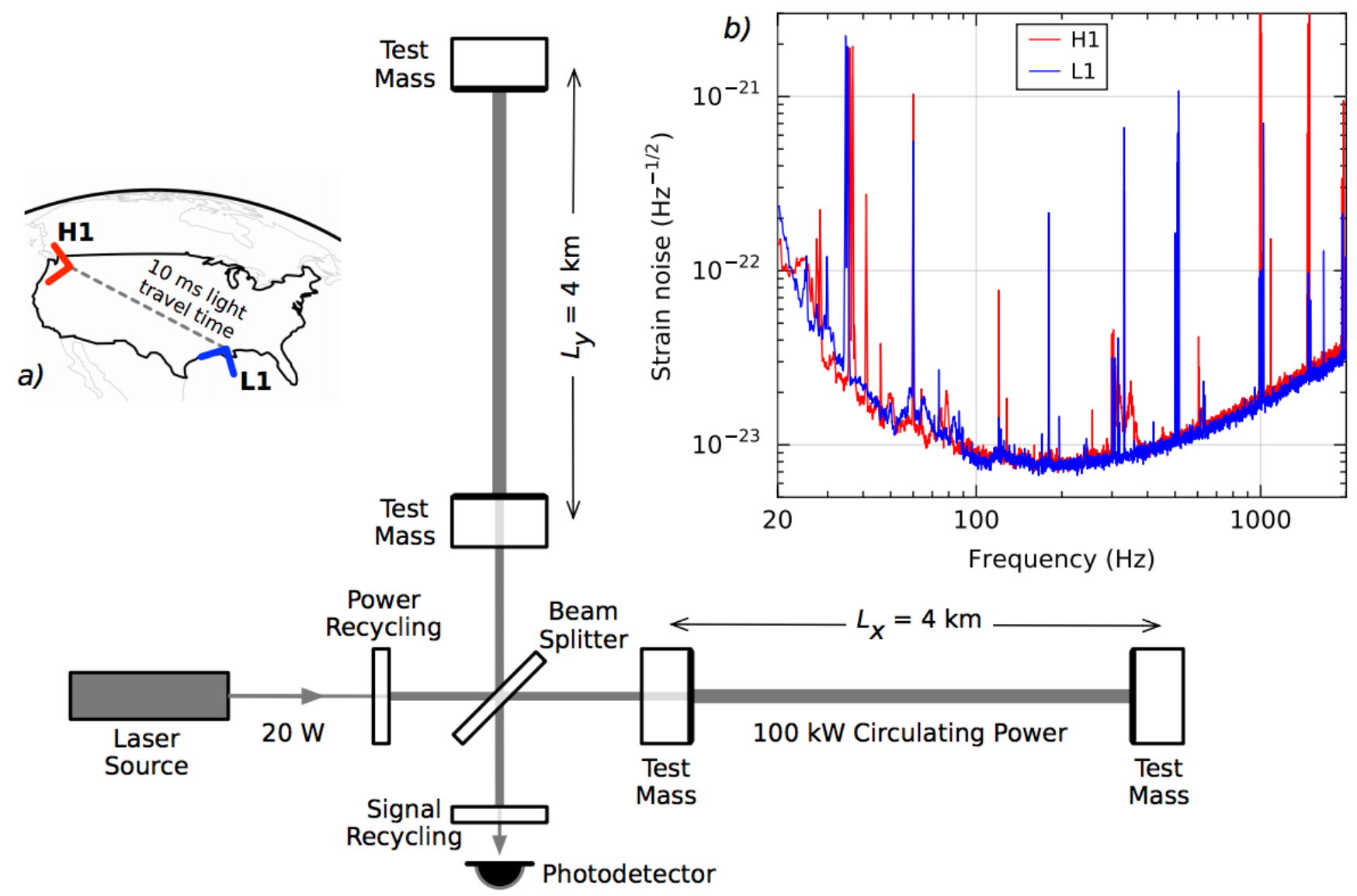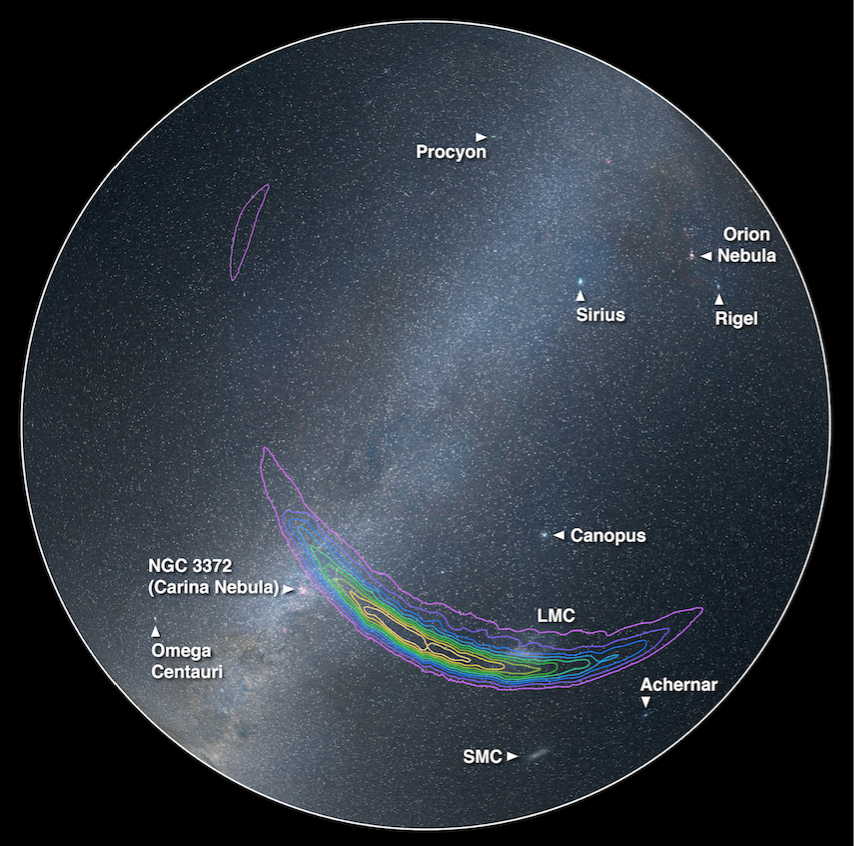Opening Our Ears to the Universe: LIGO observes Gravitational Waves!
Disclaimer: I am one of over 1000 scientists in the LIGO-Virgo Collaboration. Many members have been working for decades to accomplish this feat of scientific discovery. Twelve papers were written in companion to the gravitational wave detection paper and are filled with more amazing results. This bite just scratches the surface of the implications of this discovery. See here for much more!
In 1916, the year after correctly formulating the theory of general relativity, Albert Einstein predicted that accelerating masses create ripples that propagate through the fabric of spacetime. However, Einstein himself believed that any attempts to detect these “
gravitational waves” would prove futile, as the effect that they have on their environment is miniscule. Almost poetically, a century after Einstein’s prediction this elusive phenomenon has been validated. On September 14th, 2015, a new window to the Universe was opened.
Detecting a ripple in spacetime
Though gravitational waves are invisible, they do have a measurable effect on the space they travel through by causing distances to shrink and stretch. That is where the
Laser Interferometer Gravitational Wave Observatory (LIGO) comes in. The LIGO detectors in Livingston, Louisiana and Hanford, Washington utilize laser light as a very precise stopwatch to measure this effect. The detectors are identical
Michelson interferometers, shooting powerful lasers down equal-length cavities four kilometers in length. Since the speed of light is constant, if the race down the interferometer arms and back is a “tie” it means that the light traveled the exact same distance and the arms are exactly the same length. LIGO is set up to have the beams
destructively interfere in this case, resulting in no signal in the detectors. However, if one of these arms is stretched or shrunk, say by a gravitational wave, the race
will not be a tie; the beam traveling down the shorter arm will win the race and interfere with the beam traveling down the longer arm, creating a signal.
Figure 1. A simplified diagram of an Advanced LIGO detector. The upper-left inset shows the location and orientation of the two LIGO detectors, indicating the light travel time between the detectors. The upper-right inset maps the instrument noise for the Livingston (L1) and Hanford (H1) detectors. The noise is dominated by seismic activity at low frequencies and
shot noise at high frequencies. Narrow spikes are caused from various sources, such as electric power grid harmonics and vibrational modes of the suspension system.
Figure 3 of the detection paper.
The signal that LIGO detected on September 14th, referred to as GW150914, came from the
merger of two black holes that were about 36 and 29 times the mass of the Sun. During the second before these giants merged, the energy released in gravitational waves from the system was 10 times greater that the energy released by all the stars in the observable universe! However, since spacetime is very “
stiff” and the black holes merged over a billion lightyears away, even an event as powerful as this created a minuscule effect on the space that Earth occupies.
Whisper from the Universe
The strength of signals detected by LIGO is given by a dimensionless quantity known as
strain, which is essentially the change in the length of the interferometer’s arms divided by the arm length. LIGO can detect strains analogous to a change in distance in the 4 kilometer-long arms that is a million times smaller than the size of a proton. For another perspective of how tiny this strain is, if the length of the interferometer arms were instead an Earth-Sun distance of 150 million kilometers, this strain would only be change of distance in these hypothetical arms as small as a hydrogen atom! Over its 1/5th of a second in the LIGO frequency band, GW150914 reached a peak strain of 10^-21.
Figure 2. GW150914 observed by the Hanford detector (left column) and Livingston detector (right column). The top row shows the strain measured in each of the detectors. The second row shows the strain in the 35-350 Hz band (cutting out low and high frequencies), a numerical relativity waveform for a system with parameters consistent with GW150914 (solid line), and the 90% credible regions for two independent waveform reconstructions (gray). The third row shows noise residuals after subtracting the filtered numerical relativity waveform from the filtered detector time series data. The bottom row shows a time-frequency representation of the strain data, with the distinctive “chirp” of the signal frequency increasing over time.
Figure 1 of the detection paper.
Since LIGO needs to be sensitive to the tiny signals of gravitational waves, it is also susceptible to various environmental and instrumental sources of noise. LIGO data is inherently noise-dominated. Though coherence between the two detectors is used as an initial screening (astrophysical signals are expected to be seen in both detectors with a time difference less than or equal to the light travel time between the detectors), sophisticated data analysis techniques are still necessary to search through the data for true astrophysical signals. One of the methods used involves searching for genuinely “loud” signals. However, trying to find a gravitational wave signal is like trying to hear a single conversation in a very loud party – it greatly helps to know how the particular conversation is meant to sound. Equipped with the equations of general relativity, simulated waveforms are created for thousands of compact binary merger systems. These “template” waveforms are compared to the LIGO data as another means to search for true astrophysical signals. Both of these search techniques recovered GW150914, and provided the
5-sigma confidence that is a standard for scientific discovery. This means that the rate at which a signal analogous to GW150914 is created by noise is less than 1 in every 203,000 years.
Deciphering the signal
Utilizing the waveform detected by LIGO and the best-fit
numerical relativity waveforms, properties of the binary black hole system were estimated. The waveforms of binary black holes depend on 15 intrinsic (i.e. spin, mass) and extrinsic (i.e. sky location, inclination) parameters.
Bayesian statistical techniques such as
Markov Chain Monte Carlo estimated the mass of the black holes to be ~36 and ~29 solar masses, the redshift at which the merger occurred to be ~0.09, the final mass of the merged black hole to be ~62 solar masses (the missing 3 solar masses of energy is what was released by gravitational waves during the merger), and the sky location of the event.
Figure 3. The estimated sky location derived from the most accurate parameter estimation code. The different colors mark 10% increases in the probability than GW150914 came from these regions. Note that we do not expect to see an electromagnetic counterpart for the merging of two black holes.
Figure derived from figure 4 of the companion paper Properties of the binary black hole merger GW150914.
In addition to being the first direct detection of gravitational waves, GW150914 is loaded with astrophysical implications. This event provides the first observational evidence of binary black hole systems, and tells us that these systems can merge within the age of the Universe. GW150914 also provides the first evidence that “heavy” black holes actually exist in nature; before this discovery
indirect evidence of
stellar mass black holes only uncovered masses up to ~20 solar masses. As an added bonus, GW150914 provided a unique test to Einstein’s 100-year-old theory (which passed with flying colors), as well as being the first true test of the strong-field regime of general relativity.
Figure 4. Images from a numerical relativity model (top), the gravitational wave strain (middle), and the relative velocity and separation of the black holes (bottom) for GW150914 over time. The very close separation of the two objects before merger (which is derived from the waveform) indicates that they are indeed black holes.
Figure 2 of the detection paper.
The discovery of GW150914 represent results from the first month of advanced LIGO’s first observing run, which lasted a total of about 4 months. During this first month, another possible signal was found: LVT151012. Though much weaker than GW150914 and not significant enough to be declared a “detection,” it is likely astrophysical and from the coalescence of two black holes. From the detection of GW150914 and possible detection of LVT151012 during the first month, the possible rate of binary black hole mergers for systems analogous to these can be derived. If both GW150914 and LVT151012 are included, the rate of mergers for these classes of black holes is ~6-400 per cubic gigaparsec per year.
For almost all of humanity’s existence, the sole way in which we have studied our Universe is through light. This discovery has given us a new “sense” to explore the Universe, in a way opening our ears and allowing us to
listen to the cosmos for the first time. Gravitational waves will allow us to probe objects, events, and epochs that are inaccessible to light, such as the merging of two black holes or the first second after the Big Bang. With more detections, we can further constrain the rate at which compact binary mergers occur, learn about the environments in which they occur, and test our models predicting their formation. Furthermore, when more advanced gravitational wave detectors join the network (such as advanced
Virgo in late 2016), triangulation of gravitational wave sources in the sky will drastically improve, increasing the chances of detecting an electromagnetic counterpart to gravitational wave signals and probing these systems through multiple messengers. Needless to say, this detection will prove to be one of the most significant discoveries in modern physics, as it has opened an entire new realm of the Universe to explore.











 el copión
el copión


 , quizás no a nosotros pero sí a los que vienen.
, quizás no a nosotros pero sí a los que vienen.